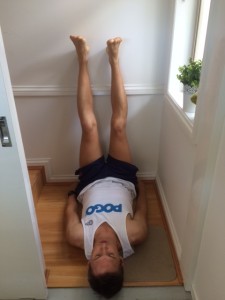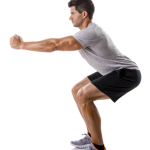A TRAIL RUNNER’S 3 BEST RECOVERY STRETCHES
A TRAIL RUNNER’S 3 BEST RECOVERY STRETCHES
We are in the middle of a second worldwide running boom. Not since the first running boom of the 1960’s has the world seen such a massive uptake of running as people’s recreation and exercise mode of choice.
Many runners have found great joy, challenge, and satisfaction through including trail running as part of their training routines and racing calenders. Both seasoned and beginner runners are finding taking to the trails a highly enjoyable and fitness enhancing experience. Not to mention the fun aspect of running through all sorts of terrain and safely finding your way home!
As a physiotherapist and avid runner myself (trails and road) I have found that runners regularly including hilly trail runs in their program or race calender benefit from stretching three chief muscle groups. These muscle groups are the quadriceps, calves, and hamstrings. These muscles are often subject to varying levels of tightness due to the two key differences of trail running compared with road running. Compared with road running trails are often across uneven terrains, and they also more often than require the runner to navigate hills of varying gradients-from rolling foot-ills to extremely steep!
Appropriate stretching of these muscles will assist the trail runner to decrease adverse loading of joints in the feet, ankle, knee, hip, and even lower back. The result is a reduced likelihood of injury and a likely enhancement of performance.
I have detailed the best stretches I prescribe in assisting trail runners recover from races, hard training, and with general body maintenance below:
1.QUADRICEPS (QUADS)
The quadriceps are involved in driving and lifting the thigh upwards when running up a hill. The ’quads’ are also involved braking (slowing) down a runner that is running downhill. Needless to say the quads do a lot of work in any given trail run. Stretching of these muscles (there is four muscles in the quadriceps ‘group’) will serve to assist recovery and trail running performance. I recently published a post that looks at the 3 best ways to stretch your quadriceps.
Click HERE to view videos of the 3 levels-pick your level-beginner, intermediate, or advanced.
2. CALVES
I am often heard coaching running clients of mine that ‘tight calves’ are in fact not due to a lack of stretching but rather tight calves are due to ‘calf weakness’. As a result I coach most runners on the need to focus more on calf strengthening as opposed to calf stretching- in order to combat tight calves. While this holds true for the vast majority of runners with recurringly tight calves, following a hilly or uneven surface trail run very few runners would not benefit from a nice sustained calf stretch. Even the runner with sufficient or optimal calf strength or endurance can still experience a degree of calf tightness following a hilly trail run.
See below to view my favourite and most often prescribed method of stretching the calves.
3. HAMSTRINGS
Just as the quadriceps do an enormous amount of work when navigating trails so too do the hamstring ‘group’ (there are three muscles that form this group). The hamstrings are involved in the push ‘through’ or push ‘off’ phase of running (ie when the leg projects behind your body) and also in the deceleration of the lower leg when running downhills. Just as with the quadriceps I have some favourite ways for runners to effectively and safely stretch their hamstrings. They are:
a. Advanced hamstring stretch with band. Click HERE.
b. Sustained wall stretch (see below).

In this stretch the runner simply lays flat and puts their legs vertically up a wall. The closer the runner’s bottom gets to the wall the stronger the stretch that will be felt in the hamstrings. This stretch has the added bonus of protecting your lower back as it is in a flat verse rounded position, as is characteristic of the majority of popular hamstrings stretches (ie leg on a fence, hurdlers stretch etc). This stretch will also assist with recovery and ‘flushing’ of the legs following either a long or hard trail run, due to the venous and lymphatic drainage that it provides (ie the legs are above the level of the heart).
Personally I would often lye like this following several hours of running in my local hilly forest in preparation for marathon events for up to 10-15mins (much to the annoyance of my wife). Start with 3-5mins of stretch time and progressively build stretch time as required. Grab a book and pillow and settle in! You can also try the split legs version of this stretch where you (yes do the splits) as this increases the stretch of the hamstrings.
Finally runner’s often ask me when is the best time to stretch, and how often should I stretch?
My advice is typically to stretch where possible after a hard session or that evening before bed. In terms of frequency of stretching my advice is that the frequency of stretching should be proportionate to the number and volume of training sessions being completed. If for example a runner is running 6 days a week and covering some kilometres than they would be well served to stretch daily or as close to daily as possible. Compared with a runner running two-three times per week who may be fine with twice-weekly stretching.
Happy trail running!
#runpainfree
Brad Beer (APAM)
Physio, Author AMAZON Running and Jogging Bestseller You CAN Run Pain Free! A Physio’s 5 Step Guide to Enjoying Injury Free and Faster Running –available for purchase HERE.
ps. feel free to leave any Questions or comments and I will reply.
RELATED POSTS:
1. Unsure of whether to run or rest? Take the test to know HERE.
2. Foam roller tips for runners HERE.
3. Does running really cause knee osteoarthritis? HERE.






